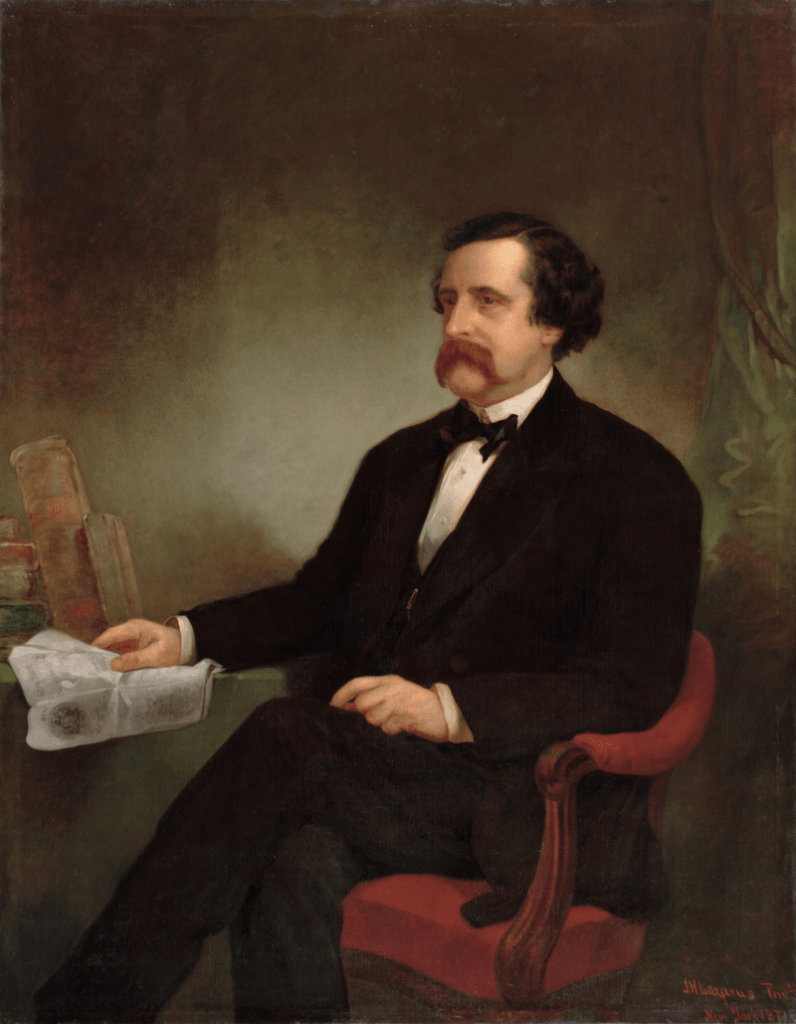
By Mary Hoar, President of the Untermyer Performing Arts Council, Yonkers Historical Society President Emerita
Monday, June 1st
June 1, 1872: New York State Governor John Hoffman signed the Charter establishing Yonkers as a city.
June 1, 1929: Teams of Yonkers detectives, led by Lieutenant George Ford, simultaneously raided a saloon and two soft drink parlors, arresting four men in the process. The team seized 700 bottles of beer, more than 100 gallons of whiskey and gin, and large quantities of wine.
June 1, 1936: Chief and Edward Quirk received a report of vandalism to a Somerville Place home, and openly confessed he did not know what to do about it! Blackbirds were attacking the house, pulling off one shingle after another.
Tuesday, June 2nd
June 2, 1932: Lester Carter, brought to Yonkers by the Yonkers Scottsboro Action Committee, addressed a gathering at the Messiah Baptist Church, swearing to the innocence of the Scottsboro boys. The slim blonde youth had ridden the same freight train as the nine Scottsboro boys; these African-American boys faced death in the electric chair because they were accused and convicted of raping two white women. Their defense team, aided by the Communist Party USA and the NAACP, brought the case to the US Supreme Court; the court found irregularities in their trials, including a poor defense, and sent the cases back to the original court to be retried.
June 2, 1943: Fourth Precinct Patrolman Steven Kaputa won his fight for reclassification by his draft board. Each time he enlisted previously, they put him in a deferred class, denying him the opportunity to serve. Finally, he was reclassified as 1-A, ready for military duty.
Wednesday, June 3rd
June 3, 1933: City employees, waiting for their deferred paychecks, were told they had to wait another 24 hours. Yonkers needed $350,000 to pay the usual first of the month salaries, and owed another $30,000 for the weekly laborers.
June 3, 1942: Otis elevators were used to raise aircraft planes during the Battle of Midway.
June 3, 1943: Yonkers Salvage Committee Block Leaders made national news with this headline from the New York State Salvage Committee release: ”Black Leaders Getting Fat!” Joseph Ringwalt had reported to the State Salvage Committee that our Block Leaders had done such a great job promoting the salvage of waste fats in Yonkers homes, Yonkers had a 33% increase in fat collections during the month of March.
Thursday, June 4th
June 4, 1746: Nepperhan Harbor was used for the embarkation of British troops during the war between England and France.
June 4, 1943: Lieutenant H. B. Ressler of Yonkers and team were driving over a bridge on a dark night in Africa. Stopped by an Arabic soldier who demanded they “Halt,” Ressler tried to speak to him in French. Another member of the party addressed the soldier in Spanish, both to no avail. Finally, they showed the officer there War Department identification; he scanned them for a moment, and then said, “OK. You can go on!“ The gentleman, whose English was perfect, had lived for many years in Brooklyn!.
Friday, June 5th
June 5, 1916: The Recreation Commission asked Yonkers Police to assign officers to Glen Park on weekends to break up the regular gambling.
June 5, 1923: The New York Central Railroad offered a reward of $500 for any information that would lead to the arrest and conviction of those responsible for the wreck of a Putnam Division train days earlier at the Yonkers city line. The train engineer was killed and eight passengers were injured.
June 5, 1943: The Federal Statutory Court upheld the Interstate Commerce Commission’s order permitting the New York Central to abandon the Getty Square branch of the Putnam Division. The only recourse left to the City of Yonkers, the Public Service Commission, the Committee of South Yonkers Commuters and the people of Yonkers in their fight to save the branch was to appeal to the US Supreme Court.
Saturday, June 6th
June 6, 1931: The League of Struggle for Negro rights and the International Labor Defense of Yonkers appealed to all labor unions and fraternal workers organizations to send delegates to their conference at the Workers Cooperative Center, 252 Warburton Avenue. The conference was called to protest lynchings and race discrimination as a new wave of terrorism against African-Americans, with lynchings in the south increasing dramatically, was sweeping into many areas of the country. Southern mill owners were charged with inciting hatred, setting white workers against black workers.The appeal stated it was “the duty of all workers’ organizations and individuals, white and Negro, native and foreign born, to rally in the struggle against lynchings and race discrimination.”
June 6, 1945: After not seeing each other for more than four years, brothers Lansing and Frederick Hallock of Morsemere Place finally met up in Glessen, Germany! Brother Lansing, the Corporal who raised the first American flag over Werther, Germany, got permission to visit his brother, and found him at 1 AM in bed. By the way, German civilians made the flag Hallock raised, using material from German flags the Americans had captured.
Saturday, June 7th
June 7, 1928: Yonkers schools Superintendent Lamont Hodge announced the new $625,000 addition to Saunders Trades Schools on South Broadway would allow an additional 300 students to attend when it opened in September, almost doubling the student body to 700 learners.
June 7, 1930: Workers missed capturing 50 white perch while preparing to clean out the Fortfield reservoir on Palmer Avenue. Instead, the fish swam into the city’s water system and clogged several water mains, effectively cutting off the Yonkers water supply. Water Superintendent Oscar Barker stopped the work at Fortfield to have the fish removed.
For more information on the Yonkers Historical Society, Sherwood House and our upcoming events, please visit our Facebook pages. For information on membership in the Yonkers Historical Society, please call 914-961-8940 or email yhsociety@aol.com.




